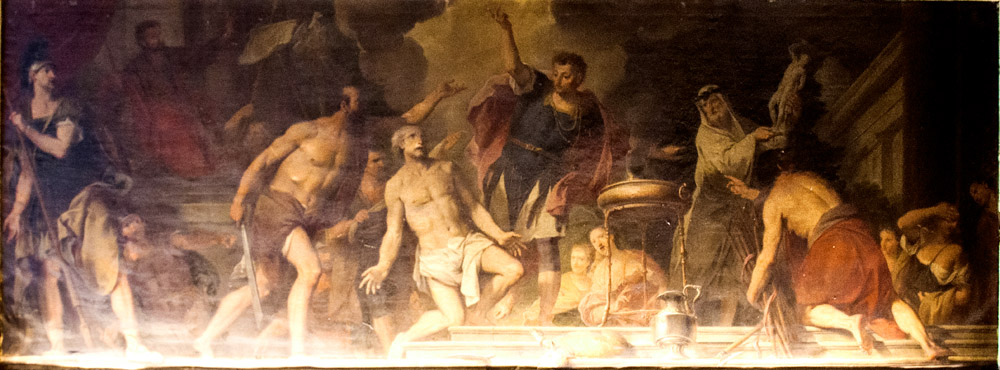
In Ravenna, St. Ursicinus, Martyr. After many torments he remained steadfast in his faith and achieved martyrdom by decapitation under the Judge Paulinus. – Roman Martyrology for June 19
|
A good many medieval martyrologies list St. Ursicinus, and the narrative of his martyrdom forms the beginning of the Golden Legend's account of St. Vitalis, which is based on a late insertion into the legend of Saints Gervasius and Protasius. In that source Ursicinus was a physician whom the Judge Paulinus had condemned to death for being a Christian and who was so fearful when taken to the place of execution that he was ready to recant. Seeing this, St. Vitalis called out, "Don't do it, Don't do it, Physician Ursicinus! You who cured others, do you want to infect yourself and be bound to eternal death?" These words gave the physician strength, and he knelt down to accept beheading. Vitalis then took the body and buried it "with all the honor due to a martyr."1 It was this intervention that brought Vitalis to the judge's attention and led to his own execution.
There appear to be no attributes associated with Ursicinus. Ravenna's cathedral has a painting of his actual beheading, but the only portrait I have found is this detail in the procession of martyrs in Sant'Apollinare Nuovo, which does not identify the saint other than by the inscription above his head. The white flowers at his feet are scattered throughout the mosaic, and all the martyrs are pictured with crowns. Nor is the beard unique; two other martyrs in the procession have beards, one black and one white. Prepared in 2019 by Richard Stracke, Emeritus Professor of English, Augusta University. |
SHOWN ABOVE
In a painting at the San Vidal in Venice, Vitalis stands with Ursicinus and exhorts him to accept martyrdom. The physician's options are signified by the executioner on the left with his sword and the priest on the right with his idol. (View this image in full resolution.) DATES
ALSO SEE BIOGRAPHY
NOTES
|